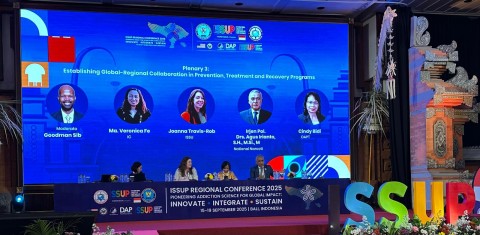What does the future of prevention look like? At the Bali Conference 2025, I shared how schools and families — the foundations of every community — can be empowered to nurture resilience across generations. When evidence meets culture, prevention becomes a global movement sustained by communities themselves.
On 17 September 2025, I had the privilege of delivering a plenary at the Bali Conference titled:
“Empowering Communities Across Borders: Adapting School and Family-Based Prevention for Global Impact.”
Prevention works best when it is rooted in communities and adapted to local realities. While science provides us with proven models — such as school-based life skills programs and family-strengthening initiatives — their true impact comes when they are adapted to respect culture, context, and community ownership.
Schools and Families as Foundations
Schools and families are universal entry points. Evidence shows that when prevention is embedded in classrooms and supported at home, the effects ripple across generations. In Malaysia, for example, we have seen how students gain critical social-emotional skills to resist risky behaviors, while parents rediscover their role as anchors of support.
Adapting for Local Contexts
No single model can be applied uniformly across countries. Cultural norms, family structures, and community systems differ. The challenge — and the opportunity — lies in how we adapt these models and frameworks in ways that preserve fidelity to evidence while allowing flexibility for local contexts.
Across Asia and beyond, cross-border collaboration is making this possible. Partners are sharing curricula, training facilitators, and learning from each other’s adaptations — not imposing solutions, but co-creating them.
Looking Ahead
Drug demand reduction is not just a national agenda; it is a global responsibility. By empowering communities to adapt and own prevention, we strengthen collective resilience.
How would the future of prevention look like?
It is a future where science guides us, but culture gives it meaning. A future where prevention is co-created across borders, shaped by the voices of communities themselves.
This is the movement we are building together — grounded in science, shaped by culture, and sustained by communities.
How would the future of prevention look like?
It is a future where science guides us, and culture gives it meaning. A future where prevention is co-created across borders, shaped by the voices of communities themselves.
This is the movement we are building together — grounded in science, shaped by culture, and sustained by communities.

